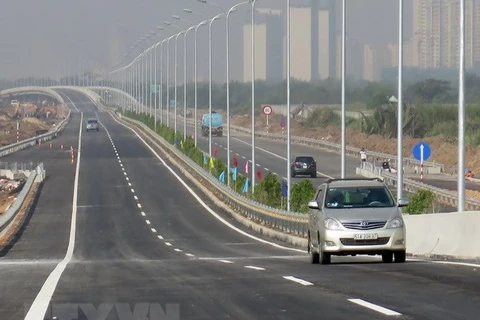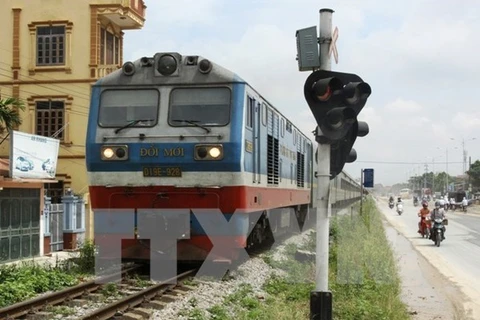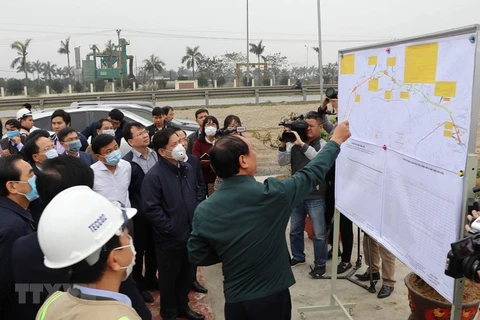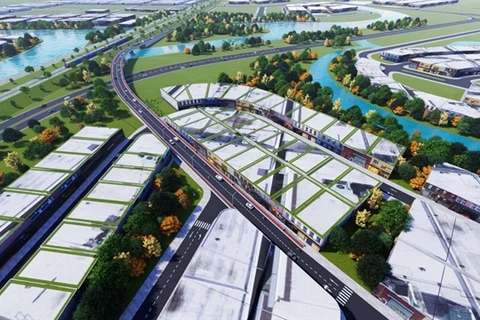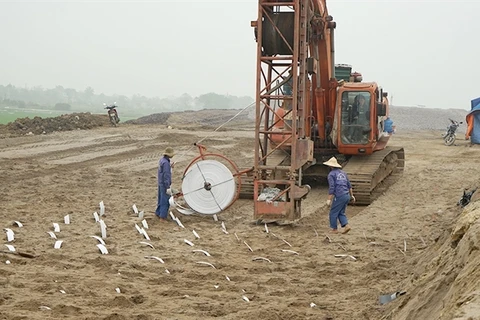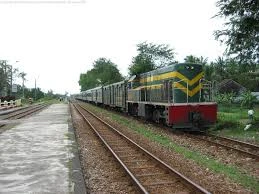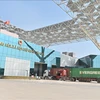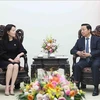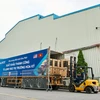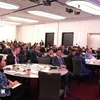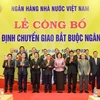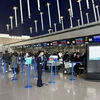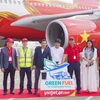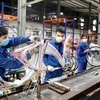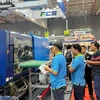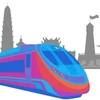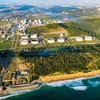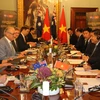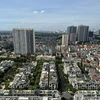 Once the construction is completed, the Ministry of Transport will transfer the operation of 8 North-South expressway projects. (Photo: Viet Hung/ Vietnam+)
Once the construction is completed, the Ministry of Transport will transfer the operation of 8 North-South expressway projects. (Photo: Viet Hung/ Vietnam+) Hanoi (VNA) - Once the construction is completed, the Ministry of Transport will transfer the right to operate eight North-South expressway projects to recover the capital contributed to the State budget. However, many people think that investors will have to carefully consider the project.
Impact on the fee collection of National Highway 1
Once the North-South Expressway is completed and put into operation, traffic density will be eased. The BOT Highway 1 investors worry that this will have an impact on their revenue, therefore the initial financial plans have to be extended.
Being an investment unit which is collecting a fee to pay back the investment on the expansion of the National Highway 1 project in Nghi Son (Thanh Hoa province) to Cau Giat (Nghe An province) and the project to upgrade and expand National Highway 1’s Ben Thuy bridge - bypassing Ha Tinh city in the form of BOT, CIENCO4 said the investment in the North-South Expressway project will be divided, affecting the financial return of the BOT projects.
“If the expressway concession is applied, CIENCO4 requests the Ministry of Transport to consider the impact of the BOT contract on projects on National Highway 1 to ensure the return of capital to investors, including CIENCO4 Group,” said Nguyen Tuan Huynh, CIENCO4 General Director.
In the context of declining revenue due to the COVID-19 epidemic, according to the representative of Deo Ca Investment Joint Stock Company, the financial plan for BOT projects will be even more difficult when the State puts the North-South expressway into operation, creating a parallel road and reducing traffic density, making impact on toll collecting plan.
Therefore, in order to prevent possible bad consequences, the State should immediately take proactive, radical and timely solutions.
In this regard, Deputy Minister of Transport Nguyen Ngoc Dong affirmed that this is a foreseen development. There are contractual terms in the process of negotiating and expanding National Highway 1 in the form of BOT. There is even a plan within the financial layout for vehicle traffic distribution, with an estimate of how much to pay for expressways and how much percentage is required for Highway 1.
"The Ministry of Transport will work with relevant agencies to consider the actual conditions, update the number of vehicles and finalise the financial plan," Mr. Dong emphasized.
How easy is it to transfer a highway operation right in Vietnam?
The transfer of the right to operate highway in Vietnam is unprecedented. Expressway concession is a form of public-private partnership (PPP). The investor puts in capital and is entitled to exploit the route to get returns. The length of the toll collection period is based on transfer value. According to statistics, the concession period usually lasts 25-30 years.
Previously, the Vietnam Highway Development Corporation (VEC) developed a plan to transfer the right to operate five expressway projects, including Noi Bai-Lao Cai; Cau Gie-Ninh Binh ; Ben Luc-Long Thanh; Ho Chi Minh City-Long Thanh-Dau Giay, and Da Nang-Quang Ngai. These 5 routes are 540 km long and have a total investment of up to 125,572 billion VND. However, until now, there has not been any project that involves foreign investors.
Associate professor and doctor Tran Chung, Chairman of Vietnam Association of Road Traffic Investors (VARSI), said that North-South expressway projects concession aims to recover capital to pay to the state budget. However, he said that, in order to attract investors into these subjects, attractive conditions are needed.
According to Mr. Chung, investors must see benefits through financial plans to be ready to invest capital, human resources, equipment, and management skills. Because, in addition to focusing on the management and safe operation of the highway according to strict standards, the investor also has a very important task of maintaining the road from being degraded during the time of contract.
“Therefore, the criteria will be considered carefully. In addition to important criteria such as traffic, positive economic forecasts of the region, what investors are interested in is the uniformity and continuity of the entire expressway, especially the quality of the work,” said Mr. Chung.
According to many transportation experts, one of the reasons why investors have to "consider" and still hesitate when making decisions, is that the majority of highway projects put into operation have recently been met with overbudgeting, which affects the financial plan and capital recovery. These options are very easy to discourage investors.
Since then, experts have said that without strong commitments from the government and the Ministry of Transport, the concession of expressway operation to foreign investors will only be a prospect./.
